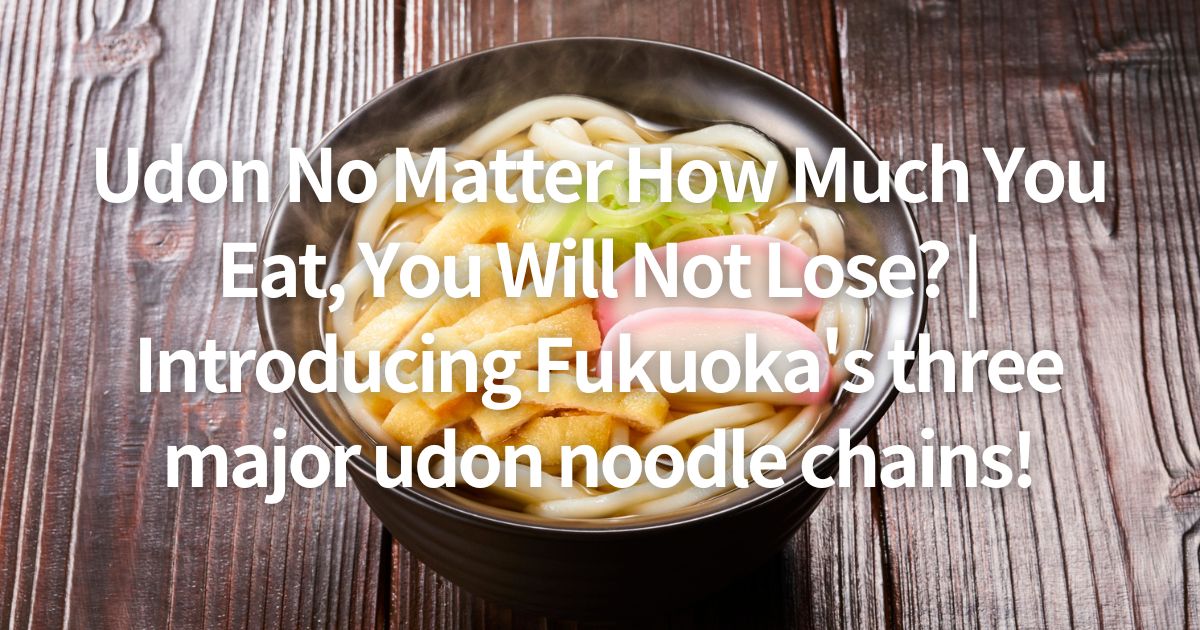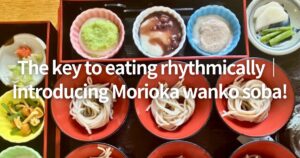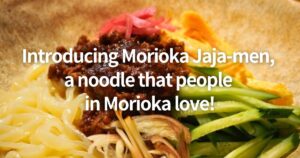What do you think of Fukuoka’s specialties?
Mentaiko (spicy cod roe), mizutaki (rice casserole), and Hakata tonkotsu ramen.
Don’t people in Fukuoka eat Hakata tonkotsu ramen every day?
Many people may think so.
However, local people do not eat Hakata tonkotsu ramen every day!
In fact, they eat udon more on a daily basis than Hakata tonkotsu ramen, udon is the soul food of the local people!!
At least that was the case when I was there..
Also, when we think of udon, we tend to imagine noodles with a firm texture like Sanuki udon, but
soup udon noodles in Kyushu are very soft.
So, in this article, I will explain the little-known outline of Fukuoka udon, its appealing points, as well as recommended Fukuoka udon and how to enjoy it, including my own experience.
I hope you will be inspired to take an interest in Fukuoka udon.
Why do people in Fukuoka eat udon more on a daily basis than ramen in the first place?
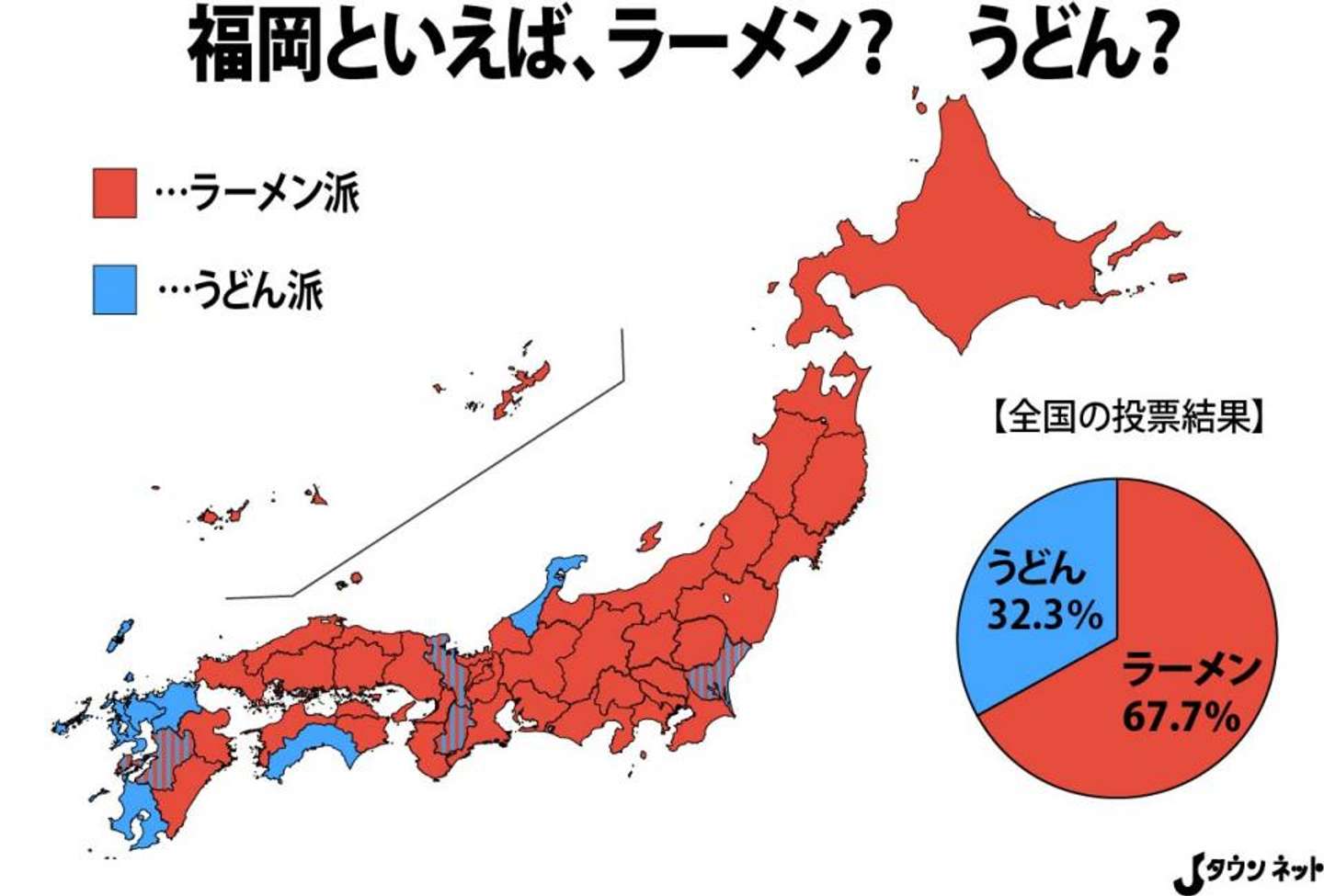

In Fukuoka, udon is more popular as an everyday food than ramen.
The reason for this is that udon is healthier and has a lighter flavor, and is accepted by people of all ages.
Udon and soba outnumber ramen in food service expenditures, and their popularity is also due to the large number of local chain restaurants and the familiar taste of dashi broth.
Udon and soba are chosen on a daily basis because they are easy to eat and easy to digest, even on busy days or the day after drinking too much.
Why are the noodles not as firm as Sanuki udon?
The reason why Fukuoka udon noodles do not have firmness is because in the merchant town of Hakata, “quick to eat” and “easy to digest” were required.
The noodles are boiled longer and softer than in other regions.
The strong firmness of Sanuki udon was not emphasized, and a sticky texture and gentle gentleness were preferred.
Fukuoka, the birthplace of udon, also has a history of soft noodles, which have traditionally taken root there.
Indeed. If soup udon had the firmness of Sanuki udon, it would be hard to chew quickly and would easily burn the inside of your mouth…
Three Attractions of Fukuoka Udon
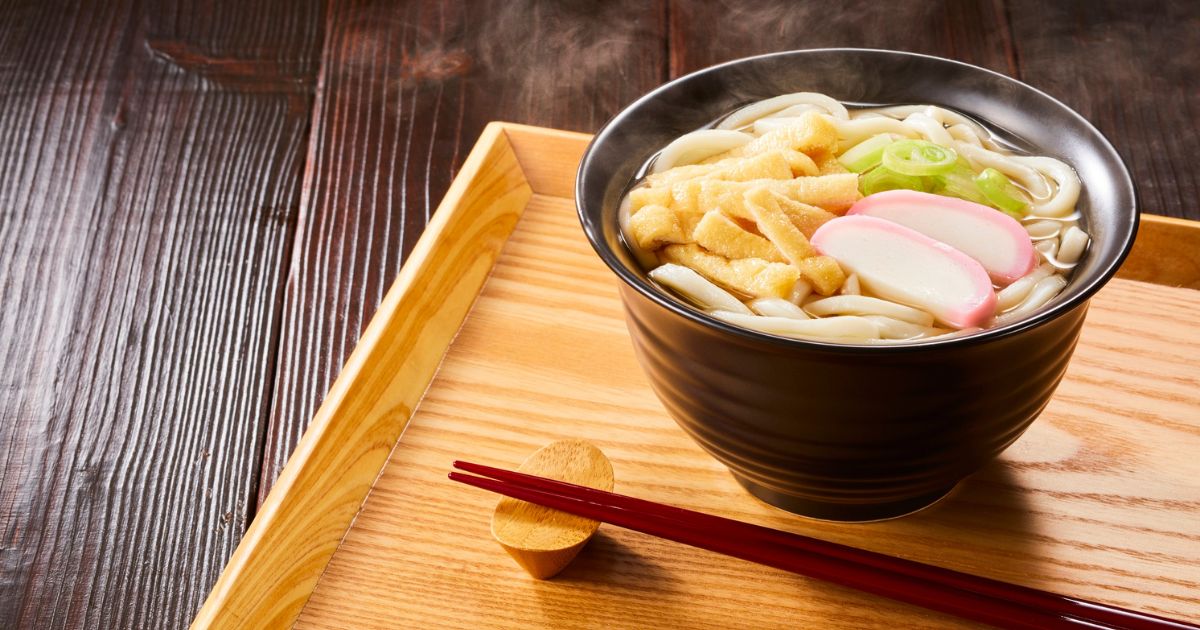

I have summarized some of the attractions of Fukuoka Udon that I feel.
Soft, fluffy and glutinous noodles
The greatest appeal of Fukuoka udon is its unique fluffy, soft and glutinous texture. The most attractive feature of Fukuoka udon is its soft and fluffy noodles.
They do not have the strong texture of Sanuki Udon, but have a gentler texture.
Using Kyushu-grown wheat and boiling them longer makes them easy for anyone to chew through and easy to digest.
It also has a history of being devised for the busy merchants of Hakata to be eaten quickly.
Delicious and elegant broth
Fukuoka udon dashi is made from kelp, dried sardines, dried bonito flakes, mackerel flakes, horse mackerel flakes, horse mackerel (flying fish), and other seafood, and is finished with light soy sauce, giving it a clear golden color and elegant flavor.
It has a light yet rich flavor that makes you want to drink it all the way through.
The noodles are soft to take advantage of the flavor of the dashi, and are also called “dashi eater udon.
Unique toppings and variations
Fukuoka udon is also attractive for its toppings.
A wide variety of regionally unique ingredients are available, such as gobo-ten (burdock root tempura), maruten (fish paste tempura), and sweet and spicy beef.
In addition, you can freely add yuzu pepper, yam, kelp, tenkasu, and other ingredients to customize the flavor.
A set meal with “Kashiwa Meshi” (rice with chicken) is also popular, allowing visitors to experience the unique local food culture.
The toppings and side dishes of Fukuoka Udon are unique and profound, and will be introduced in a separate article!
Three Fukuoka Udon restaurants I recommend
In this article, I will introduce “Fukuoka’s 3 major udon chain restaurants” which are always talked about when talking about Fukuoka udon.
My recommendation for “Fukuoka’s 3 major udon noodle chain restaurants”
My recommendation for “Fukuoka’s 3 major udon noodle chain restaurants”
Kamaage Maki no Udon
✅ Recommended Points
- A chain founded in 1985 that originated in Hakata Ward, Fukuoka City.
- The most distinctive feature is the “kama-age method,” in which boiled noodles are served whole in a kettle to lock in the steam and create a chewy texture.
- The clear golden broth based on kombu (kelp) and bonito flakes is a perfect match for the thin Kyushu wheat noodles.
- The restaurant pursues a simple taste and is widely supported by both local customers and tourists.
- The restaurant has an efficient layout with mainly counter seating, making it easy and appealing.
✅ Recommended menu
- Shimeji Udon
- 560 yen (tax included)
- Thin noodles made of Kyushu wheat are accented with shimeji mushrooms that have a firm abalone-like texture.
- The clear golden broth made from kelp and bonito enhances the flavor of the ingredients, and the contrast in texture between the soft noodles and the broth is exquisite.
- The noodles retain their sticky texture for a long time because of the kama-age process that traps in the steam.
- A simple yet profound dish with the flavor of the mountains.
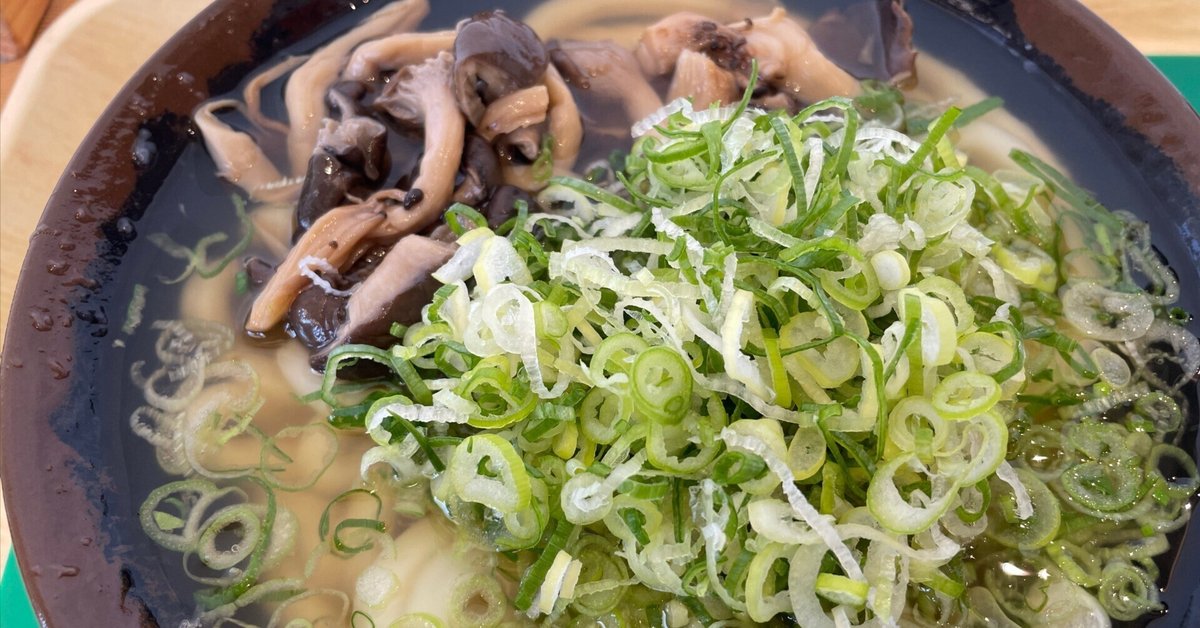

West
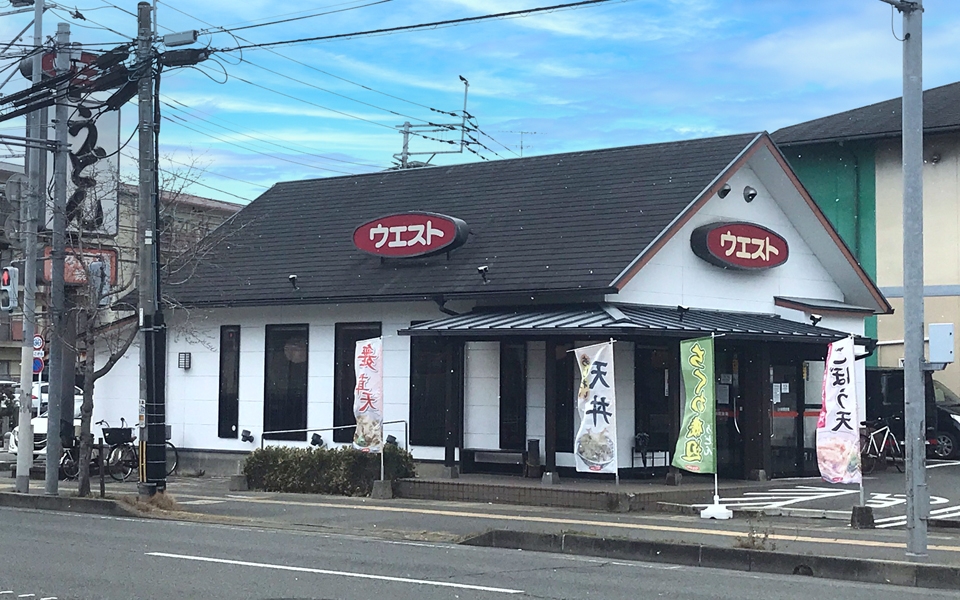

✅ Recommended Points
- Founded in 1966, this is Fukuoka’s largest chain (67 stores in the prefecture).
- The hybrid texture of “smooth and chewy” is achieved by using frozen noodle technology.
- The triple broth of kombu, bonito, and niboshi (dried sardines) is elegant and easy to drink without any unpleasant taste.
- The restaurant features a system that allows customers to add green onions and tenkasu free of charge.
- The brightly lit restaurant with mainly counter seating attracts a wide range of customers, from businessmen to families.
- At night, the restaurant offers a full izakaya (Japanese-style pub) menu to meet a variety of needs.
✅ Recommended menu
- Kakiage Udon
- 590 yen (tax included)
- The crunchy kakiage (deep-fried tofu), which is served as an attachment, is packed with the sweetness of vegetables and the flavor of prawns.
- The smoothness unique to frozen noodles and the transparency of the broth are a perfect match.
- Dip the tempura into the soup and enjoy the change in texture.
- Adding a small amount of yuzu kosho (citrus pepper) enhances the flavor, a combination that shows off the skills of a professional.
- With its volume and elegant flavor, it is recommended for first-time customers.
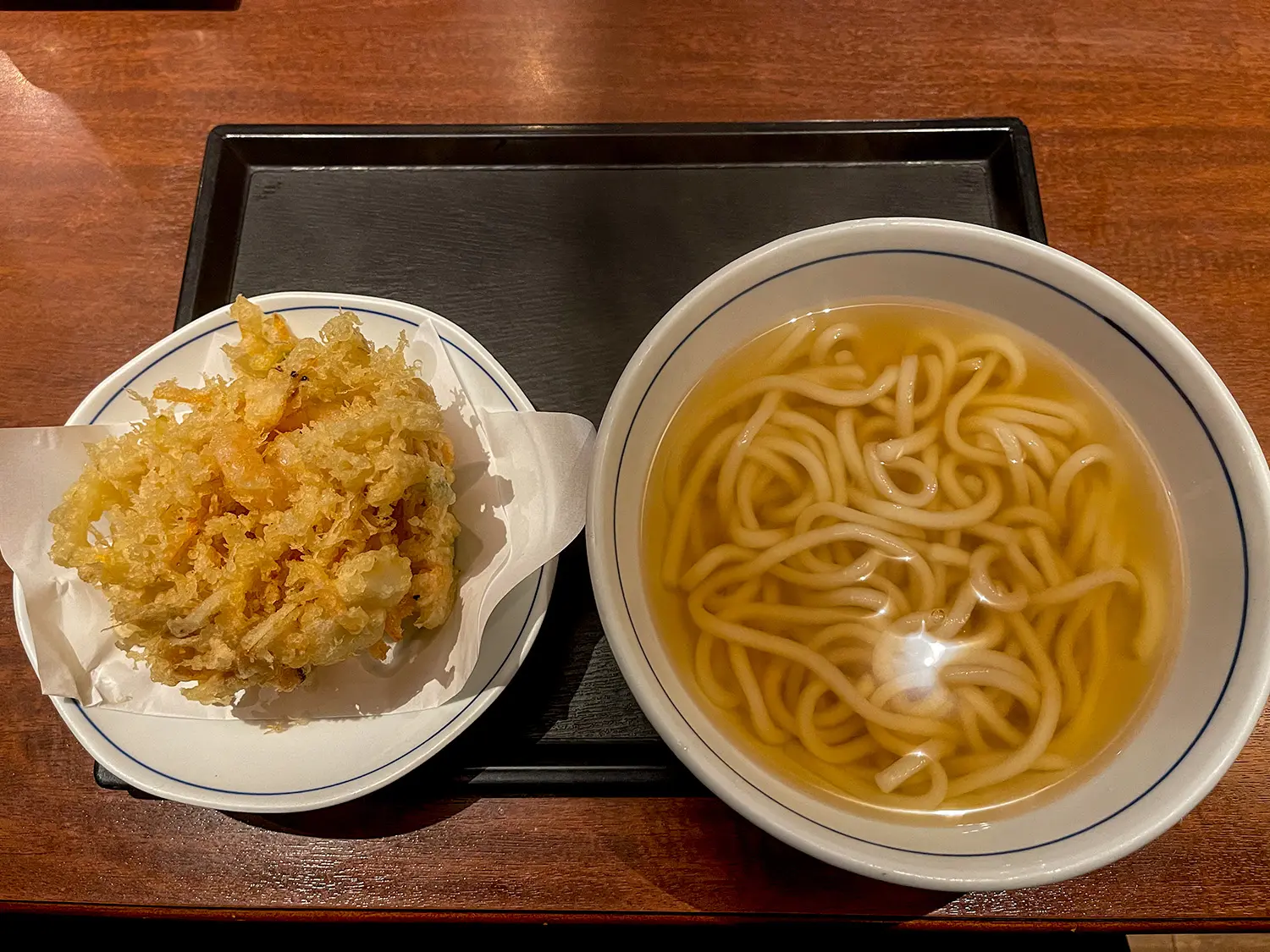

Sukesan Udon
✅ Recommended Points
- A long-established chain with over 130 restaurants in Fukuoka Prefecture.
- The soy sauce broth based on chicken stock is deep and rich, and the medium-thick noodles have a unique elasticity.
- The specialty “gobo-ten” (burdock root tempura) is famous throughout Japan for its thickly sliced burdock root with a crunchy texture.
- There are many set menus, and the combination with Kashiwa-meshi (rice with kashiwa seaweed) is the standard.
- Many suburban stores are equipped with parking lots, making them ideal for families.
- Some are open 24 hours a day, making it easy to experience Fukuoka’s food culture.
✅ Recommended menu
- Yaki Udon
- 790 yen (tax included)
- Yaki Udon has a savory flavor of chewy noodles with homemade sauce.
- The flavor is enhanced with tenkasu and dried bonito flakes sprinkled on top.
- The rich udon noodles in chicken broth and the simple sweetness of anko (red bean paste) and kinako (soybean flour) are a perfect combination.
- In Tokyo, the Ryogoku branch opened at the end of last year, and even now there is still a line at some hours.
If you don’t eat Maki’s udon quickly, the noodles will absorb more and more of the soup and become thicker and thicker, which rarely happens even if you eat more…
Column: At Maki’s Udon, you can choose the hardness of noodles such as “hard,” “medium,” and ‘soft’ noodles.
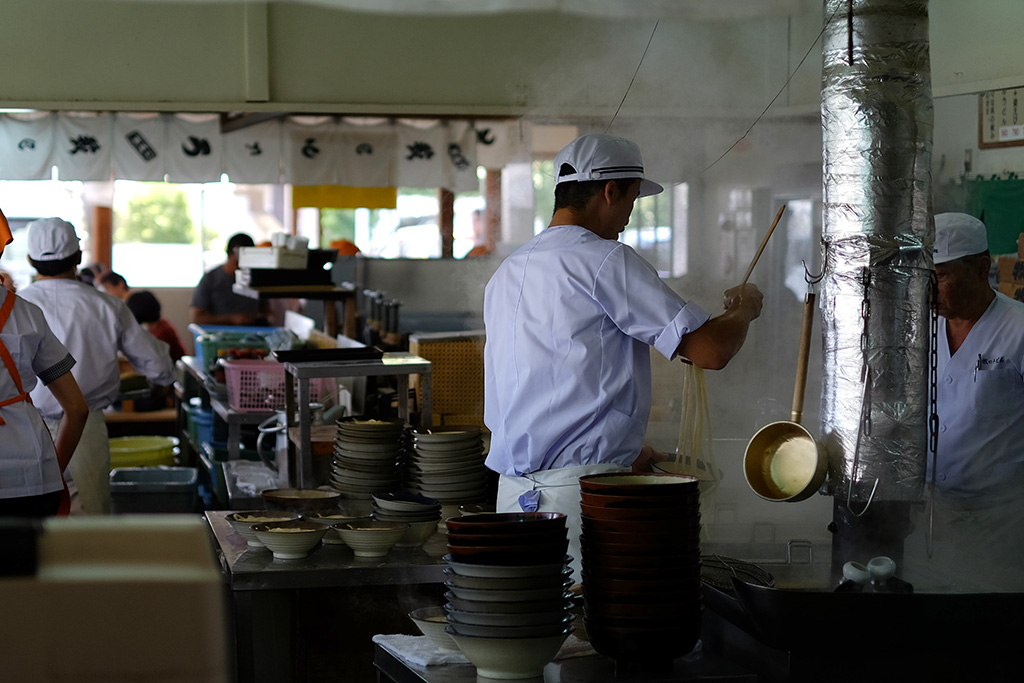

Softness is the basic concept of Fukuoka’s udon culture, but at Kama-age Maki’s Udon, you can choose “hard,” “medium,” or “soft” noodles.
This is a device that takes into consideration the noodle’s ability to absorb soup, and the “soup absorption speed” and “texture” can be adjusted depending on the hardness of the noodle.
The hard noodle is designed to retain the flavor of the soup to the end, while the soft noodle is designed to allow the noodle to soak up the flavor of the broth.
This is to meet the different needs of local customers who “want to enjoy the soup purely” and “want to pursue a fluffy texture.
It is difficult for people who have never lived in Fukuoka to understand the difference between “soft noodles” and stretched noodles, even if we explain it in words.
So, please go there and try it once!
Three ways to enjoy Fukuoka Udon for foreigners visiting Japan
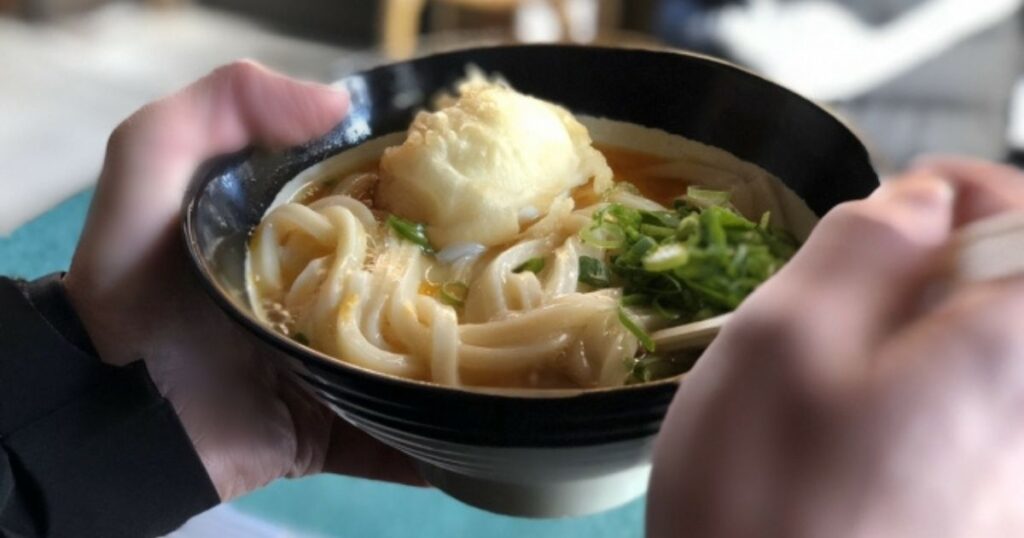

To enjoy Fukuoka Udon to its fullest, try these tips:
✅ Enjoy the change of taste by “topping off” the broth
Fukuoka Udon is characterized by hot broth served in a kettle. Fukuoka udon is characterized by the fact that the hot dashi broth served in a kettle is added to the noodles as they are tasted.
The noodles absorb the broth and become softer over time, and you can experience the process of the soup stock gaining depth.
Some restaurants blend multiple dashi broths such as kombu (kelp), bonito, and saba bushi (mackerel) to provide a taste that will keep you coming back for more.
✅ Customize with toppings of goboten and maruten
In addition to the standard “goboten” (fried burdock root) and “maruten” (fried fish paste), the combination of sweet and spicy beef and yuzu pepper is popular.
Each store has different variations (whole fried burdocks or thinly sliced fried burdocks), making the choice of toppings itself part of the fun.
✅ Experience Fukuoka-style dining with Kashiwa-meshi
The standard order is a set of udon noodles and takikomi-gohan “Kashiwa-meshi” (rice with chicken).
The light udon goes well with the rich rice, and locals sometimes arrange it as “udon rice” with dashi broth.
It is characterized by the variety of ways it is enjoyed not only for breakfast and lunch, but also as a way to finish off a drink.
It is interesting to note that each restaurant has different accompaniments for udon, such as kashiwameshi (rice with kashiwa) for Maki’s udon and ohagi (rice balls) for Shisan’s udon.
You can easily taste Fukuoka udon at home!
Authentic Fukuoka udon is hard to find outside of Fukuoka, such as in Tokyo, but you can purchase it from Amazon from the comfort of your own home.
In this article, I would like to introduce some of the Fukuoka udon that I recommend from one of Fukuoka’s three major udon chain restaurants, and that can be purchased on Amazon.
I think you will find that they have a different taste from the ones you can get at chain restaurants.
Please take a look at them to find your favorite Fukuoka Udon.
If you are interested, check out the following products on Amazon!








Please take a look at them to find your favorite Fukuoka Udon.

